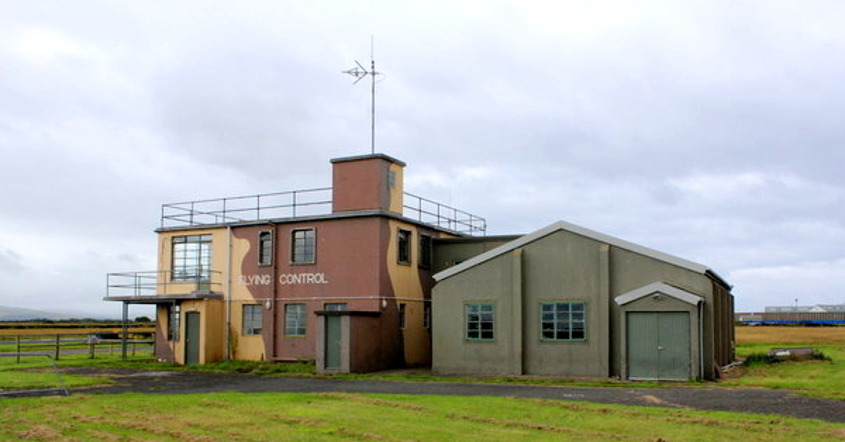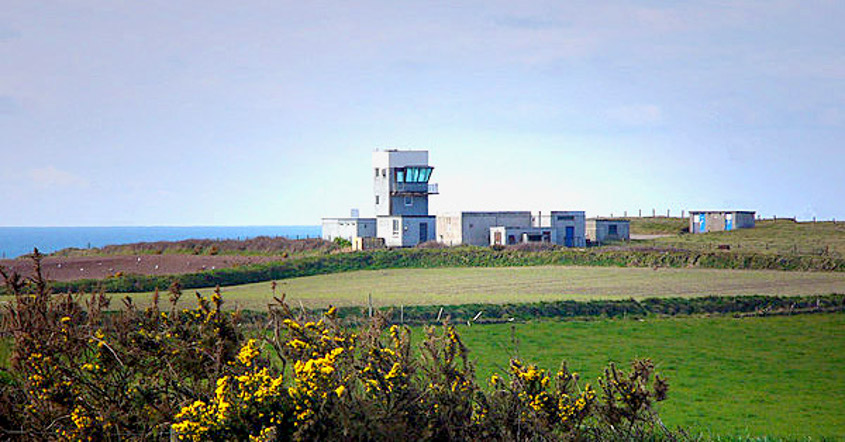RAF Jurby & The Isle of Man TT
A History Of

Now, if you are a motorcyclist, it may well be that the Isle of Man is already on your radar, and it may well be that you have heard of the Isle of Man TT – in fact it's pretty likely! If this is the case it may even be that you have heard of the VMCC Festival of Jurby, which we at Wemoto are very proud to sponsor. The Festival of Jurby has been taking place on the Isle of Man every August since 2009. It's a great motorcycle event, run by the Vintage Motorcycle Club, where you can find a multitude of amazing bikes and see them being put through their paces too. There are not only motorcycle races at the Festival of Jurby, but also lots of stalls, fresh food and live music, as you would expect at a thriving festival – and you can come and see us at the Wemoto tent and pick up some motorcycle goodies to boot. If you are in the area, and there are many reasons to visit, you can also take in the Isle of Man Motor Museum at the old RAF Jurby airfield, which showcases well over 400 motorcycles including a 1902 Clement, 2009 Norton, Sunbeams and Hondas to name but a few. Petrolheads paradise indeed!
What you may not know is the wartime history of this particular little corner of the Isle of Man, the Parish of Jurby. And that history is quite an illustrious one, as this erstwhile peaceful spot played an important part in the war effort, training pilots and defending the skies and ports of Blighty during the Second World War.
Location, motivation
Location, location, location ...the old estate agents' adage, was very relevant for the inception of RAF Jurby on the Isle of Man. The strategic value of this flat northern plain on the Isle of Man was first identified as early as 1934 as a suitable area for the construction of an airfield.
With both the ideal terrain and location, Jurby was a perfect choice and once identified, the land was commissioned by the Air Ministry. Work on RAF Jurby started at the end of September 1938, with the arrival of large earth movers which began to level the area ready for the necessary runways, control tower and buildings to be built. Crowds gathered to watch the construction work, which was on a scale not often seen on the Isle of Man, with gravel from Point of Ayre and spoil from mines at Laxey and Foxdale brought over to construct a stable base for the foundations.
After the extensive construction work was completed, RAF Jurby opened for business in 1939 just in time for the start of the Second World War.
A craggy gem in the Irish sea
Taking one look at the map is enough to see why Jurby Head and the Isle of Man caught the eye of the strategists and planners of WW2. Sitting proudly like a craggy gem in the Irish sea, the Isle of Man is at once off the beaten track and yet in a key strategic location. So once it was up and running, RAF Jurby began its life as an Aircraft Armament Traning base, home to various squadrons training fledgling pilots to fly bombers out over the Irish sea. From its roots as a training base, RAF Jurby grew and came fully on stream after the fall of France in 1940. With Europe in turmoil and the Luftwaffe on the offensive flying to target and cripple British ports like Glasgow, Liverpool and Belfast, the great defensive potential of RAF Jurby was fully utilised.
Chocks away!
From November 1940, as the war intensified RAF Jurby evolved and no less than five fighter squadrons in succession were stationed at this important base on the Isle of Man:
*307 Polish Night Flight squadron, operating Boulton Paul Defiant Turret fighter planes. This squadron, comprising Polish forces in exile, was aptly nicknamed the "Lwów Eagle Owls" after a Polish night hunting predator
*258 Squadron, flying Hawker Hurricanes
*312 Squadron, also flying Hawker Hurricanes, flown this time by Czech pilots, who patrolled the Irish sea to intercept German planes which were targeting and trying to sink the vital supplies convoys coming in and out of British ports
*302 Squadron arrived in 1941, with a core of 13 pilots who had served with the 1/145 Polish fighter Squadron and had been evacuated during the last stages of the German invasion of France. They were a great asset to the RAF as combat pilots who had flown many sorties against the Germans already
*457 Squadron finally arrived, made up of English and some Australian pilots and equipped with, the now iconic, Spitfires. These planes and pilots must have raised the spirits of the residents on the Isle of Man with their distinctive engine sound, as they flew off and returned from sorties over Jurby Head to RAF Jurby.
Gone but not forgotten
Not many of the buildings from RAF Jurby are still standing today, as most of them were built in 1938 and were only supposed to be in use for a decade. Only a few remain, in various states of disrepair, but one is the old Control Tower which coordinated all those vital flights during the war years, still standing, as though still at its post.
So if you are out and about on the Isle of Man in August there's plenty of history to take in and plenty of fun to be had in the parish of Jurby! See you there.

